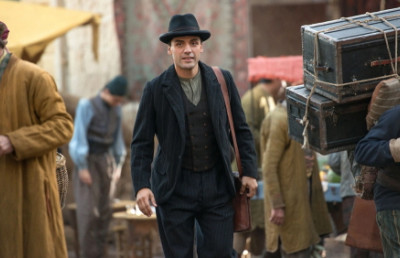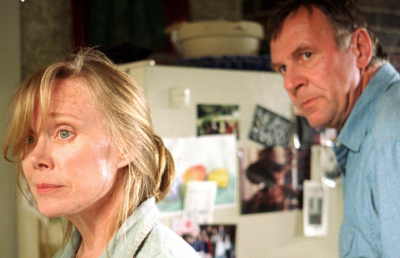The Final Girl and Male vs. Female Representation in Horror Films
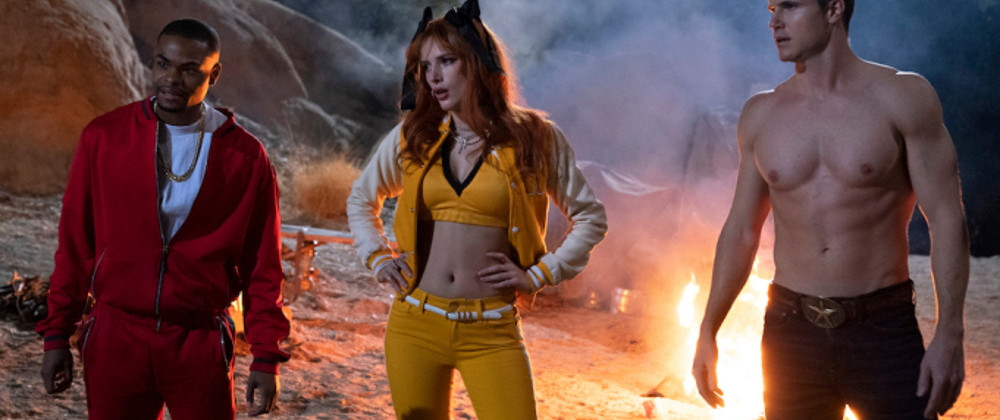
Like other artistic works, the production of films is inherently tied with the context of the moment; furthermore, due to its transgressive nature, horror has been one of the most effective genres to depict the fears and issues that plague society at the time of its making: from the panic caused by the supposed infiltration of communism in the USA and the threat of a nuclear attack during the Cold War, to racism, sexuality and gender.
As such, at first glance the essay “When the Final Girl is Not a Final Girl: Reconsidering the Gender Binary in the Slasher Film”, where Jeremy Maron argues that Carol Clover’s definition and guidelines on what makes a Slasher movie are insufficient for today’s diversity of characters and films of said subgenre, seems to lead to the proposal that takes into account issues Clover’s text doesn’t.
However, as Maron proposes the gender neutral term of Final Subject, he doesn’t seem to take into account the difference between sex and gender—crucial to Clover’s theory—nor the stark contrast between the way male and female characters are treated in Slasher films, that as recent as the release of The Black Phone (Scott Derrickson, 2022), is clearly still present in today’s cinema. Therefore, based on the representation of the violence suffered by women in Slasher films that seems to mimic everyday life’s real experiences, in subsequent paragraphs I aim to show how society’s view of femininity in contrast with masculinity leads the representation of women vs. men in different and at times opposite directions.
Paying special attention to the relation between the Final Girl 1 and the—according to Clover—male antagonist, Maron explains that he sees this usually female archetype more as a concept than a figure with specific gendered characteristics, rendering its sex unimportant because as he wishes to demonstrate, a boy/man can fulfill the role of a Final Girl, which according to him is exemplified in films like Nightmare on Elm Street 2: Freddy’s Revenge (Jack Sholder, 1985). 2
Though I too will talk later in this text about the film mentioned above; given that sex and gender are not the same thing; and taking into account that the construction and expression of the latter seems to be a continuous topic of interest for horror—especially when it’s specifically about that what makes femininity abject, as Carrie (Brian de Palma, 1976) can attest to— it’s imperative I first touch on the difference between said concepts before discussing the way certain elements like clothes and sounds have been gendered and used to construct sex in media.
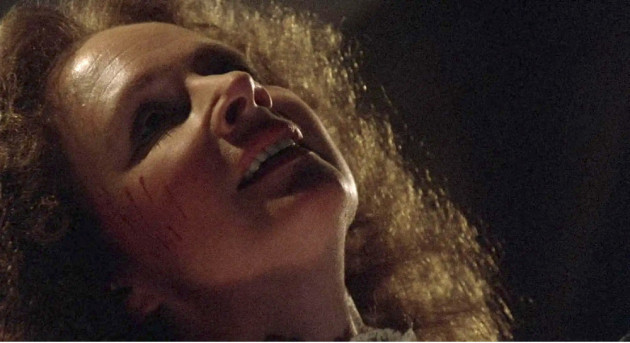
Carrie
Firstly, while sex is determined at birth and encompasses the anatomical attributes of either a woman or a man, i.e. female or male reproductive systems; gender is constructed and changes all throughout an individual’s life, and is affected by the context in which each person exists, for it depends on every aspect used by them to construct the way they present themselves to others.
Unlike sex—which depends on a more or less clear difference between a penis and a vagina, and deals with more tangible aspects— gender is conditioned by the meanings society assigns to things outside of the body that add certain values to it when in relation to said body; as Julia Tuñón explains, we can no longer assimilate sex to gender for the latter, while a symbolic representation of the first one, is constructed based on the context, culture, necessities and opinions of the moment (Tuñón 13). A good example would be fashion as, on today’s occidental society (even though they have been historically used by men before), heels are still linked with women because they are understood as a representation of femininity (which results in a relation with queerness when a male body uses them).
Just the same, though clothing seems to be the most obvious example of what helps construct gender, there are other non-visual elements that have been assigned meaning as traditionally male or female—as can be exemplified by the term Scream Queen. 3 On the subject, Kaja Silverman explains that usually certain sounds like screaming and crying are linked with female characters in mass media; she explores the way female voice is so tied with the visual of the female body as the crying, panting or screaming are always accompanied by the image of the suffering woman (Silverman). Nevertheless, even when the sounds produced by women make such an impression in the spectators, said noises end up being inconsequential to the plot as they are more of a reaction to the environment than a way to take action in it. In contrast, male voices usually take more active roles, for example yelling instructions; representing in media the difference of power positions of women and men in everyday life in both public and private spaces (Wood 122).
Furthermore, Shohini Chaudhuri notices a difference between hearing and listening in relation to female vs. male voices in everyday life that contributes to the difference in which men and women are portrayed in movies. While male voices have no trouble claiming and keeping our attention and therefore being understood, the author explains that women’s voices are more easily ignored and rather simply registered (Chaudhuri 52), which can be explained by the constant infantilization of women and, consequently, female characters that perpetuate their weakness, vulnerability and lack of independence because they are, specially in horror cinema, equated with whimpers and babbling similar to that of a toddler, and hence so easily dismissed.
An interesting example to note is in Freddy’s Revenge, in the scene when the main character Jesse Walsh (Mark Patton) seeks the help of his friend Ron Grady (Robert Rusler); as Freddy begins to take control of the protagonist’s body, Ron starts yelling for his father to open the door when he tries to escape his bedroom while Jesse is only screaming in pain and asking for help, a petition that ends up being completely drowned by the sound of Ron’s voice and therefore, ignored. As such, based on Wood’s and Chaudhuri’s ideas, Jesse matches the description of the female voice while Ron fulfills the male role as he can be heard giving orders while the first one is ignored.
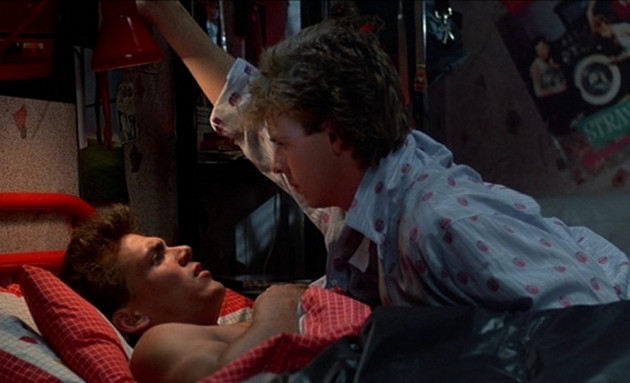
Freddy’s Revenge
On this topic, Kyle Christensen proposes a different analysis of the matter, explaining that added to the fragility of women, female screams aid in their fetishization for, in occasions, they seem to align more with moans caused by sexual pleasure; for example, the author takes the well-known shower scene from Psycho (Alfred Hitchcock, 1960), in which according to him, Marion’s (Janet Leigh) screams, in conjunction with the stabs she receives, produce some sort of allegory to a woman being penetrated during sex (Christensen 274).
Another example can be seen in Carrie. During Margaret White’s (Piper Laurie) death at the hands of her daughter by being nailed to the doorframe of the kitchen with knives, the spectator can hear whimpers that more than pained, seem pleasured, a sexual connotation that can also be seen on her face, exemplifying the relation between sexual satisfaction and violence towards women that has been constantly criticized in horror.
On the contrary, while male screams can also be heard in Slasher films, they lack the sexualization and infantilization of women’s voices, as they tend to be reserved for key moments that more than show weakness, they heighten the suffering of the victim or the monstrosity of the villain; for example, Paul Sheldon (James Caan) as his foot is being broken by Annie Wilkes (Kathy Bates) in Misery (Rob Reiner, 1990) and Matthew Bennell (Donald Sutherland) in Invasion of the Body Snatchers (Philip Kaufman, 1978) to show he’s now a pod person.
Up until now, I’ve discussed the difference between sex and gender and how the elements linked with femininity (gender) are used to construct sex (physically female characters) in cinema; nevertheless, as examples like Allyson’s (Andi Matichack) boyfriend, Cameron Elam’s (Dylan Arnold) from Halloween Kills (David Gordon Green, 2021) shows, the representation of gender through stereotypes is still present and seems to keep contributing to the negative portrayal of femininity even when presented in a male body.
In his first scene in Halloween Kills, Cameron can be seen walking through the streets of Haddonfield—presumably towards his home—calling his friend Oscar Berlucchi (Drew Scheid) that unbeknownst to him has been murdered by Michael Myers (James Jude) in the previous franchise entry (Halloween, David Gordon Green, 2018); with his kitten heels in one hand and seemingly a bit drunk from the alcohol he illegally consumed at the High School’s Halloween party, we see a scene very reminiscent of what is usually referred to as “the walk of shame” that follows a sexual encounter that usually has no emotional connection, and that in this case is represented by the fact that he kissed a girl that wasn’t his girlfriend.
It is in the midst of the failed phone call that Cameron finds Officer Hawkins (Will Patton) laying on the street, who was stabbed and ran over in the 2018’s film by Michael’s psychiatrist, Dr. Sartain (Haluk Bilginer); leading the teenager to scream for help before calling his dad, Lonnie (Robert Longstreet), who arrives to the scene and gives Cameron a hoodie, a change in costume that though at first glance seems unimportant or only tied to the fact that as an October night, it might be cold, in reality seems to signal two layers of his character: the first one being the façade we are supposed to believe of Cameron “being a man”, represented by the hoodie, and the real Cameron in relation to the part he plays within the narrative of the film, represented by his Bonnie costume.
Fast forwarding to his death scene, when we see Allyson run to Cameron’s aid after hearing his scream, we get one of the most brutal killings of the movie as after being thrown down the stairs, Allyson sees Michael slam Cameron’s head over and over on the banisters of the Myers’ home before impaling his head a couple of times on one of the wooden posts and finally breaking his neck.
Although this scene can be read as the female character (Allyson) helping the male one and therefore giving representation to female empowerment (even if it was unsuccessful), it’s important to remember that Cameron seems to be female coded due to his screams and the skirt he’s using—an element with a heavy history of being linked with femininity and therefore certain characteristics like fragility and helplessness (Entwistle 173)— leading to another example of punishing femininity even if portrayed through a male body.
Like Clover herself explains in “Carrie and the boys”—her introduction to Men, Women and Chainsaws —“Sex, in this universe [horror movies], proceeds from gender, not the other way around. A figure does not cry and cower because she is a woman; she is a woman because she cries and cowers.” (Clover 13), meaning, what makes a character a figurative woman or man is the femininity or masculinity that characterizes each of them through the gendered elements that are used to construct the character or affect it; as such, even if a figure has a male body, if they express characteristics akin to what is considered traditionally feminine, they will be read as a female character. 4
At this point I think some might argue that, if I’ve explained before that the meanings of elements used to construct gender are a social construct, then Cameron using a skirt and screaming for help would not automatically mean that he’s representing femininity, nevertheless—unlike the transgression of gender norms that has historically been done by some counter culture groups with elements like alternative fashion— the fact that said skit is part of his Halloween costume and not a piece he would don any other day, he still seems to be a cisgender heterosexual character with no intention of said transgression.
As such, though female agency seems to have a big role in David Gordon Green’s Halloween trilogy, because they seem to use Cameron to mock some of the rules that even today are still linked with the conception people have of Slasher films (ie. the killing of female victims that contradict what’s expected with traditional Christian femininity), I feel like they still seem to be punishing femininity for existing as they now transfer values that are attached to the femininity (gender) to a male body (sex), not understanding that gender and sex are not the same thing and therefore still end up perpetuating negative stereotypes.
Even the brutality of the kill seems like a nod to the violence that is usually used against women in Slasher films, that according to some statistics, have twice as long persecutions than men and more graphic deaths. As Corey Hasabeard shows when studying the Friday the 13th franchise, 74% of female characters die on screen compared with 61% of male figures; likewise, women tend to suffer more graphic deaths in which their suffering is prolonged much more than men’s (Hasabeard 28); something that has become another characteristic expected of Slasher cinema, as exemplified by the last persecution of the Final Girl, who after being emotionally tortured by the deaths of her friends, is now physically attacked over and over again by the antagonist until she, against all odds, is victorious.
In addition, in their study of the same franchise, Burry Sapolsky, Fred Molitor and Sarah Luque show that up to the 10th film (Jason X, James Isaac, 2001) there’s a total of 200 male characters and 103 female characters, from which 50% and 74% are killed respectively, meaning men have 50% chances of surviving while women only have 26%, or half the probability of men (Sapolsky, Molitor and Luque 29-30). Nevertheless, as the authors take the 200 male characters as a 100% and the female figures as another 100%, those numbers reflect the surviving chances of men and women separately; if the total number of 303 characters is considered as a whole, then men have a 33% of surviving while women have only 9%. 5
On top of that, just like the sexualization of female screams, violence against women is visually fetishized according to the Male Gaze through the manipulation of her clothes and the use of the camera lens; as Dario Argento shows, “I like women, especially beautiful ones. If they have a good face and figure, I would much prefer to watch them being murdered than an ugly girl or man. I certainly don’t have to justify myself to anyone about this […]” (Power). On the matter, it’s interesting to add Corey Hasabeard’s explanation:
In multiple installments, the Final Girl stumbles into a puddle, runs through the water, swims in a lake, or is chased through rain which forces wet cotton to cling to her breasts. These creative choices reflect the male gaze and a directorial intent to sexualize female pain, terror, and violence […] By doing this, the director undermines the autonomy of the character by transitioning her from victim of the attacker to victim of the male gaze. Statistically, every aspect of the film is slanted towards the objectification and punishment of the female body for the audience’s enjoyment. (Hasabeard 30)
All the while, the Final Girl is trying to survive the ordeal through her own means, as characters like Nancy Thompson (Heather Langenkamp) from Nightmare on Elm Street (Wes Craven, 1984) have shown; therefore exemplify one of Clover’s Final Girl characteristics, as this archetype is to be resourceful and inventive to figure out a way to defend herself on her own. It’s important to add that, though it’s not unusual for protagonists to receive help, said help mostly ends up being inconsequential as they still have to rely on their own to survive. For example, Ginny Field (Amy Steel) from Friday the 13th II (Steve Miner, 1981).
On the contrary, and serving as a perfect example of the privileged male circumstance, The Black Phone —based on a short story penned by Joe Hill—tells the story of Finney Shaw (Mason Thames), a kid that after becoming the victim of the child abductor nicknamed The Grabber (Ethan Hawke), is kept hidden in a basement for several days with only a couple of possessions as company, one being the namesake of the movie: a black phone.
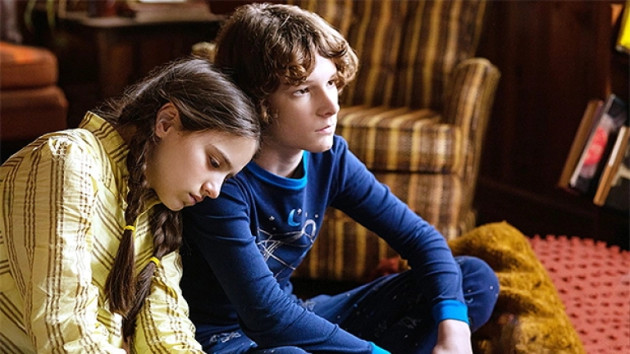
The Black Phone
Though disconnected—throughout the movie the phone rings only for Finney and The Grabber to hear, quickly leading us to learn that said apparatus functions as a medium with which the spirits of the previous victims communicate with the protagonist to give him tips in order to remain alive, as well as different options to possibly escape his imprisonment and essentially giving him a manual on how to survive. Therefore, Finney’s course of action is the result of the other victims’ experiences while he simply follows their lead and when they fail, he seems to wait for the next call to tell him what to do.
Additionally, presumably a couple of days later after having killed The Grabber, the final scene shows Finney as he returns to school with everyone staring at him in awe as he walks with new found confidence through the corridor towards his biology class where her lab partner and love interest greets him before ending the film with him asking her to now call him Finn instead of Finney, a representation of his recently developed and more mature personality that seems to undermine the trauma a child would’ve gone through as they present him as a hero with a new found confidence.
In contrast, in movies like The Texas Chain Saw Massacre (Tobe Hooper, 1974), after finally managing to escape, the protagonist Sally Hardesty (Marilyn Burns) is clearly seen extremely distressed after enduring the abuse and violence at the hands of the Sawyer family, and even as she manages to get in the cargo bed of a passing pick-up truck who drives her away to safety, while she laughs manically it becomes blatantly obvious she has lost her mind as a result of the whole ordeal, prohibiting or at least limiting—specially as we take into account the fact that this movie was made in the 70s—her “entrance into the symbolic” (Rieser 13), in other words, obstructing a satisfactory insertion into society and therefore showing an opposing end to the story of this Final Girl if compared with the resolution of The Black Phone.
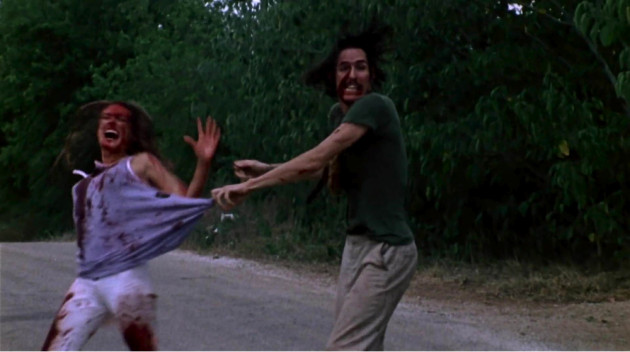
The Texas Chainsaw Massacre
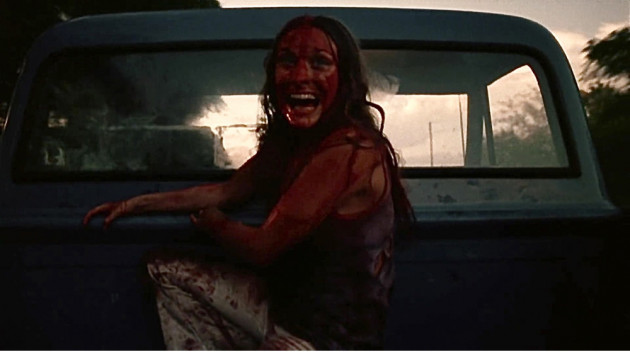
The Texas Chainsaw Massacre
As Klaus Rieser explains, by the end of the films the female protagonist “[…] barely wins anything, most of the time only barely surviving her ordeals, sometimes even loosing her mind in the process. In difference to a typical male initiation story, she does not gain entrance into the symbolic, she does not get social approval in the form of ‘getting’ a boy.” (Rieser 13) As such, there’s a clear contrast in the way male and female characters are presented at the end of horror films as survivors; while a boy has grown and mature into what society thinks of a successful young man, the girl has lost her innocence and her mind, making us question if she really survived as we wonder what part of her remains.
In a similar fashion to Finney’s story, even if the sanity of the male protagonist is questioned by everyone around him at the beginning of the movie, The Babysitter: Killer Queen (McG, 2020) 6 —while a horror comedy unlike The Black Phone and the second entry to The Babysitter duology— also shows the male protagonist, Cole (Judah Lewis), at the end of the movie as a more mature version of himself as he begins to successfully grow from a boy into adulthood due to his experiences as a victim, ending up with the girl, Phoebe (Jenna Ortega) and even being happy as he retells the whole ordeal to the nurse/counselor in a lighthearted manner, seemingly brushing off the severity of the trauma.
In this case, and looking back to the topic of resourcefulness that characterizes the Final Girls, one could also argue that Cole wouldn’t have been able to survive in the second film if not for the aid of Phoebe, for even if there are examples of mutual help throughout the movie, she seems to supply key elements that enable his initial escape from a boat in the middle of a lake and later a cabin (that belonged to her parents) where they can hide—albeit briefly, before Melanie (Emily Alyn Lind), the main antagonist, reaches them.
Even in Freddy’s Revenge (one of the main examples Maron uses in his article), Jesse is saved by his girlfriend Lisa Webber (Kim Myers), who in the end embodies more of the hero’s attributes that characterizes the Final Girl while Jesse, thought the protagonist, aligns more with a victim.
On the other hand, it’s important to note that, in Freddy’s Revenge and other examples like Get Out (Jordan Peele, 2017), the male protagonists are not victimized for their manhood but because of his sexuality and his race respectively; as Clover herself explains, “Boys die, in short, not because they are boys, but because they make mistakes. Some girls die for the same mistakes. Others, however, and always the main ones, die—plot after plot develops the motive—because they are female.” (Clover 34) As such, female protagonists seems to have no other distinguishing characteristic aside from their sex and gender, as well as being in the wrong place at the wrong time, a disturbing fact that aligns all too well with the reality of the situation for victims of sexual violence, which are for the most part female.
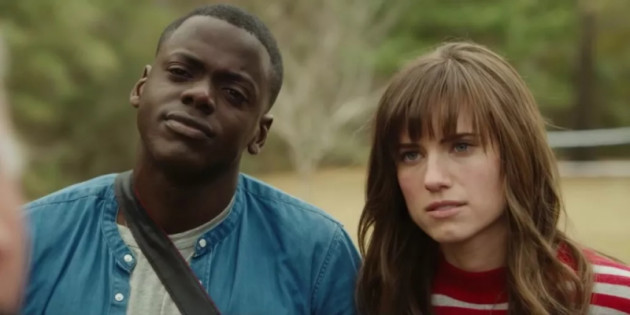
For example, looking once more to Killer Queen, even though Phoebe is also chased by the antagonists, her victimhood seems to be derived from the fact that she’s with Cole and not because there’s something within herself that makes her the target of the main villains; the only exception being a scene when she seeks help from a guy they find camping, who we immediately see as a sexual predator when he tries to make a move on a clearly underage girl.
Though the scene doesn’t go further due to Cole’s intervention, the man’s intentions are clear and he marks a stark contrast between what makes Cole a victim in comparison to Phoebe, because while Melanie and company are behind Cole because—to their knowledge—he’s still “pure of heart”, meaning: a virgin, his sex and gender are not important; on the other hand, Phoebe is attacked because she’s a girl and consequently, vulnerable.
As such, while Slasher movies seem to show the horrors of different minorities like black people, the LGBTQ+ community (as exemplified by Freddy’s Nightmare and Get Out) and womanhood at the hands of a patriarchal society; because manhood is not an underrepresented group both in and outside mass media, it’s exactly the reason why male characters are not attacked because of their sex or gender; on the contrary, female character’s construction in films is closely linked with womanhood and femininity and the way they are still attacked in present day society.
With this I don’t mean problems about other minorities like the ones mentioned above are less important, of course not; nevertheless, when speaking specifically about gender, femininity and the female experience seem to still be a topic of discussion and inspiration that makes figures like Clover’s Victim-Hero and Creed’s Monstrous-Feminine still front and center of the Slasher subgenre and its study, validating the necessity to keep gendered the term Final Girl in today’s world as it seems to represent the way womanhood and femininity are treated in everyday life, as Catriona Miller says specifically about young women’s representation in horror:
For young females, in particular, the outward reality they encounter is likely to be patriarchal in tone. As they move from childhood to adolescence, they must come to terms with changing bodies and emotions; but they must also come to terms with society’s changing responses to them. It may come in the form of a father’s altered attitude, unable to accept their little girl becoming a woman. It may come in the form of a freshly urgent note of jealousy and competition among friends and potential boyfriends. It may come in the form of male strangers in the street accosting them, or passing comment on their appearance, as even a brief glance at the entries on the Everyday Sexism Project website (Everyday Sexism Project, n.d.) makes clear. Despite several decades of feminist campaigning, it appears that sexuality still spells potential danger for young women.
Thus it may be looking at the phenomenon from the wrong perspective to insist that the films depict a repressive violence against women; rather, they may be a particularly stark representation of what it feels like to be female within a patriarchal society […] (Miller 9)
In essence, with this text I hoped to have demonstrated the difference in which male vs. female characters are treated in Slasher films as an accurate representation of the attitude of today’s society towards femininity and masculinity, a contrast still preset in contemporary media as exemplified by films such as The Black Phone —released just a couple of months ago—, where the protagonist is given a metaphorical manual on how to survive; while characters like Sally from The Texas Chain Saw Massacre and other Final Girls to date have been left to their own devices and lost their minds as payment for their survival.
On the other hand, while there are more than a handful of instances where the protagonist corresponds with a male body, it’s not their sex or masculinity that’s being punished, because being a man—whether a traditionally masculine man or only having a male body—aligns them with the group that holds the power until other elements like their gender, sexuality or race, creates in them the otherness that makes them abject and therefore subjected to violence, rendering sex unimportant or at least of lesser significance when it comes to male characters.
On the contrary, while race and sexuality also affect female subjects, the plain and simple truth is that just existing in a female body makes them a minority and lead them to be easily victimized, a victimhood that is augmented when femininity is added. As such, though I do agree that we should question the guidelines that make not only the Final Girl archetype but the whole Slasher genre as a whole—specially with the diversity that in recent years has been able to slowly reach mass media— I disagree with Maron who proposes the idea of the gender neutral Final Subject, because gender is in fact important in Slasher cinema and, I’d argue, in the Horror genre as a whole, leading me to conclude not only the validity but also the importance of maintaining the use of the female specific Final Girl term to name the female protagonists that time and time again have to endure patriarchally justified violence.
Sources
Chaudhuri, Shohini, Feminist Film Theorists: Laura Mulvey, Kama Silverman, Teresa de Lauretis, Barbara Creed, Oxford, Routledge, 2006, 148 p.
Christensen, Kyle, “A Dynasty of Screams: Jamie Lee Curtis and the Reinterpretation of the Maternal Voice in Scream Queens”, Critical Studies in Media Communication, Vol. 36, No. 3, February 2019, p. 274.
Clover, Carol J., Men, Women and Chain Saws. Gender in the Modern Horror Film, Updated Edition, Princeton University Press, 2015, 260 p.
Entwistle, Joanne, El cuerpo y la moda. Una visión sociológica, Barcelona, Paidó, 2002, p. 287.
Hasabeard, Cory, “Pamela, Jason, Roy and Zombie Jason Hate Women: an Analytical Look at the Politics of Death in the Friday the 13th Franchise”, Horror Homeroom. Friday the 13th at 40, Special Number 1, Spring 2020, p. 28.
Klaus, Rieser, “Masculinity and Monstrosity Characterization and Identification in the Slasher Film”, Men and Masculinities, Vol. 3, No. 4, 2001, p.370-392. Taken from https://www.researchgate.net/publication/258153818_Masculinity_and_Monstrosity_Characterization_and_Identification_in_the_Slasher_Film
Maron, Jeremy. “When the Final Girl is Not a Final Girl: Reconsidering the Gender Binary in the Slasher Film.” Offscreen, Vol. 19, No. 1, January 2015. https://offscreen.com/view/reconsidering-the-final-girl
Miller, Catriona, “You can’t escape: inside and outside the ‘slasher’ movie”, International Journal of Jungian Studies, Vol. 6, No. 2, 2014, p.108-119.
Power, Edward, “Dario Argento”, The Irish Times, July 21st, 2001. https://www.irishtimes.com/news/dario-argento-1.318986
Sapolsky, Burry S., Fred Molitor y Sarah Luque, “Sex and Violence in Slasher Films: Re-examining the Assumptions”, Journalism & Mass Communication Quarterly, Vol. 80, No. 1, 2003, p. 28-38.
Silverman, Kaja, “Dis-embodying the Female Voice”, Patricia Erens (ed.) Issues in Feminist Film Criticism, Bloomington, Indiana University Press, 1990. Taken from https://publish.iupress.indiana.edu/read/issues-in-feminist-film-criticism/section/148a4822-5ea5-4ff2-a1b3-3218b61f291c#ch20
Tuñón, Julia, “Ensayo introductorio. Problemas y debates en torno a la construcción social y simbólica de los cuerpos”, Julia Tuñón (ed.), Enjaular los cuerpos. Normas decimonónicas y feminidad en México, Mexico, Colegio de México, 2008, p. 11-65.
Wood, Robin, Hollywood From Vietnam to Reagan and Beyond, New York, Columbia University Press, 1986, 363 p.
Images for both Carrie and The Texas Chain Saw Massacre taken from https://movie-screencaps.com
Notes
- The Final Girl, a term coined by Carol Clover in her text “Her Body, Himself”, names the archetype of the self-reliant usually female protagonist of a Slasher film who, against all odds manages to subdue the killer and survive through her own means. According to Clover, what sets her apart from the other female victims is her responsibility and intelligence, her competence and practicality. ↩
- Referenced simply as Freddy’s Revenge for the rest of the article. ↩
- A Scream Queen can reference both an actress or her character in a horror movie who shouts in terror as a reaction to the circumstances of the plot ↩
- I’d like to add that though I do think this categorization of what is feminine and what’s masculine perpetuates binary views that as time continues are becoming outdated, it’s not something I’ll tackle in this text as its main objective is demonstrating the way traditional femininity and womanhood is treated in horror films. ↩
- A similar study from 1990 by Gloria Cowen and Margaret O’Brien, “Gender and Survival vs. Death in Slasher Films: A Content Analysis”, Sex Roles, Vol. 23, Nos. 3/4, 1990, uses a larger base of 56 films with slightly different findings, although conditioned no doubt by different operative questions and aims. It still makes an interesting comparative read to the later study from 2013. ↩
- Referenced simply as Killer Queen for the rest of the article. ↩




